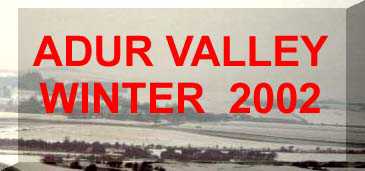WILDLIFE
REPORTS
All
reports by Andy Horton unless the credits are given
to other observers or reporters.
Adur
Wildlife Reports Index 2004
14
December 2003
 Friends
of Lancing Ring Christmas Walk 10:00
am Friends
of Lancing Ring Christmas Walk 10:00
am
After
the deluge of yesterday we were lucky to squelch through the mud of the
meadows and paths of Lancing Ring under a clear
blue cloudless sky in a pleasant 9° C.
About 25 ramblers made a circuitous journey past the now full dewpond.
On the decaying beech logs the variety of fungi was past its best.
In the forage-harvested short cropped meadows there were several clumps
of the orange-brown Tubaria
furfuracea mushroom.
Full
Report
 4
December 2003 4
December 2003
Absent
last month, but now the bracket fungi has appeared on the logs as
the cyclepath widens by the road layby
south of Beeding Cement Works. Shining white with lawyer's wig top to its
cap, the Shaggy Ink Cap, Coprinus comatus, was
distinct amongst the undergrowth of brambles next to one of the logs.
An
Elder
tree just off the Waterworks Road was covered
in clumps of the distinctive Jew's Ear Fungus, Hirneola auricola-judae.
The
trees were mostly bare except for the
brown
Ash
keys and the galls in the Silver
Birch.
Fungi
of Shoreham (with more images)
2 December
2003
In
the sombre winter landscape, the bright yellow belly of a Yellowhammer
was
clear and distinctive in the fields to the west of the Steyning Road north
of Old Shoreham and the A27 Flyover.
A small
reddish toadstool poked its cap out from amongst the grass and chopped
reeds laid prone to rot on the bank. The cap was under 20 mm across, but
then another larger specimen had a flat cap at 35 mm in diameter. This
species is Tubaria
furfuracea. It is very common on damp
wood fragments or even in rough grassland, especially late in the season.
At
the foot of a Hawthorn Tree there was a clump of Coprinus mushrooms.These
look like Glistening Inkcap,
Coprinus
micaceus, but the ID is not yet confirmed. Against the gate
on the eastern side in the sheep grazed field a couple of logs lay prone.
They were covered in small clumps of the bracket fungi Stereum
hirsutum and unidentified Mushrooms.
Fungi
of Shoreham (Link to the new web site with more images)
Adur
Levels
19
November 2003
Brooklands
Boating Lake was visited for the first time since the reports of
it being drained of water
for repairs. This has left patches of black smelly mud, but there is still
extensive shallow water where the large population of Coots,
Mallards,
Moorhens
and Black-headed Gulls can rest, with
at least one Mute Swan. Over
the grass there were a few Crows,
a
handful of Herring Gulls and
a visiting male Kestrel.
(Some of the Mute Swans
died and others were removed by WADARS
after the mysterious deaths earlier this year.)
A strange
tubweworm was noticed for the first time growing on the stems of
reeds and on solid objects in Brooklands
Boating Lake. It has not been seen in
Brooklands since the lake was created. It was first spotted this summer
from the seaward southern end and spread all over the lake but not to the
full freshwater reaches called the Teville Stream. This is the feeder stream
from the north.
Report
with information from Mrs Hawkins

Mystery
Worm from Brooklands 2003
The
reasonable speculation was that the colony of worms has been able to become
established this year because of increased salinity in the low brackish
water lagoon, because of the profound lack of rainfall this year. There
are sluice gates separating the lake from the sea, and the juvenile stages
must have arrived with a seawater intake.
Brooklands
Lake (new web page)
The
mystery organisms are the empty tubes of the serpullid worm, Ficopomatus
enigmaticus.
See
the Collins Pocket
guide to the Seashore - top of page 113 (colour plate.)
6
November 2003
Just
as I was resigned to the end of summer, a shirt sleeves sunny 16.6
ºC brought a Clouded
Yellow Butterfly fluttering over the waste
land next to the river just north of Adur Riverside Industrial Park (north
of Ropetackle), Shoreham, in the late morning. Just after midday a Red
Admiral Butterfly fluttered over the bushes
by the railway track in Dolphin Road, Shoreham, and later in the afternoon
another Red Admiral
fluttered over the path by horse's field on the south-west approaches of
Mill
Hill, (south of the A27 main road). The
constant breeze remained from the south-east for the second day running.
Adur
Butterflies Flight Times
UK
November Butterflies
19
October 2003
A
Great
Grey Shrike is seen on the Hawthorns
on the west side of Lancing Ring above the recycling
plant early in the morning from 7.50
- 8.05 am; it then flew west out of sight
in the direction of Findon Valley.
Grey
Grey Shrike Information Page
15
October 2003
A
Water
Rail,
Rallus
aquaticus, was heard screeching in the Cokeham
Reed Beds, west Lancing.
Bird
List for Cokeham
Its
caw (call) was a cross between that of a Magpie
and
a Crow, but it
looked more like an overlarge Thrush
or
Blackbird:
a couple of Ring Ouzels,
Turdus
torquatus, looked a very dirty black with a white breast as they
chose Hawthorn
bushes ahead of other shelter on the lower slopes
of Mill HiIl. According
to the Shoreham & District Ornithological Society 1988 "Birds
of Shoreham" the peak month for migrating Ring
Ouzels is October.
Day
Report
11
October 2003
As
dusk approached, scores of Pied Wagtails,
possibly numbering over a hundred seemed to be about to roost on top of
the Courts Furniture Store (opposite McDonalds) near the Hamme in central
Shoreham.
The
SHOREHAM FISH FESTIVAL on Coronation
Green, Shoreham-by-Sea,
West Sussex, was attended by an estimated 4,000 people if the sunshine
as the high six metre spring tide filled the river just before 1:00
pm. The British Marine
Life Study Society held an aquarium display
and despite technical problems with a very high plankton content in the
water (which meant the large wrasse could not
be displayed) the exhibits were well received by the younger age group.
Picture
Gallery
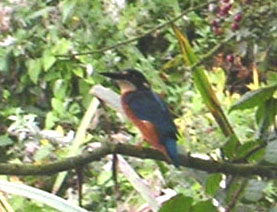 8
October 2003 8
October 2003
A Kingfisher
was
seen at the Cokeham Reed Beds, west Lancing.
Kingfisher
Photograph
by Roy Bratton
29
September 2003
Andy
Horton appeared on BBC
Southern Counties Radio to discuss the marine life
of Sussex and the work of the British Marine
Life Study Society.
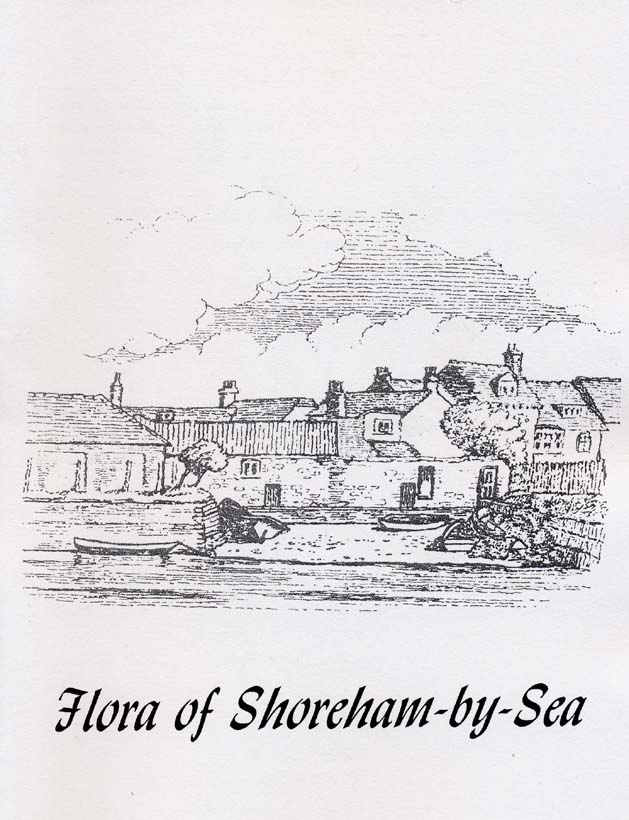
26
September 2003
The
small pamphlet "Flora of Shoreham-by-Sea"
by Betty Bishop, second revised edition
2003 was published. The price for the 28 page booklet with a complete list
of all the 673 wild flowers of the area is expected to be about £1.50
to cover the costs of production.
19
September 2003
I
dived Shoreham beach by the Church of the Good Shepherd in the early evening
and saw Cuttlefish of all sizes, Sepiola
atlantica and some young squids possibly Loligo vulgaris.

Tub
Gurnard,
Chelidonichthys
lucerna
Photograph
by Paul
Parsons
There
were also shoals of Sand Smelt,
and
other fish: Tub Gurnard,
Undulate
Ray, Plaice and Sole,
Bass
and
gobies!
c.
17 September 2003
A
specimen of the nudibranch Thecacera
pennigera is observed on the Brooklands sea outfall pipe, on
the Lancing/Worthing border, West Sussex. This small sea
slug is probably overlooked and of a sporadic occurrence rather than
uncommon, but this is the first record I have for the local coast, and
I have never seen one on the shore, where it would be notable.
BMLSS
Nudibranchia
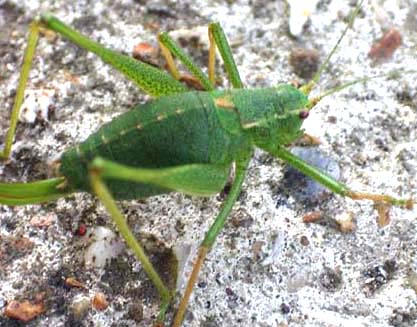 17
September 2003 17
September 2003
This
insect appears to be the Speckled Bush Cricket, Leptophyes
punctatissima, found in my front garden in Corbyn Crescent, Shoreham
(TQ
224 053).
It
was first discovered crawling over my Pashley
Delivery Bicycle, but this bicycle is only
used for short trips to the beach so I think it unlikely that it hitched
a ride and more likely that this flightless cricket arrived until its own
momentum. The cricket hopped very slowly along the concrete path. This
is a common species.
UK
Grasshoppers & Crickets
Town
& Gardens (Shoreham-by-Sea)
A Merlin
was seen on Mill Hill. The smallest bird of
prey is classified as "scarce" and a Winter Visitor and Passage Migrant
in Sussex.
SOS
Birds of Prey
14
September 2003
Off
Worthing (West Sussex), on a shallow water dive site known as the Worthing
Lumps, a small school of Rock Cooks (Small-mouth
Wrasse), Centrolabrus
exoletus, were seen shyly swimming by
the rock face, quite unlike the bolder Corkwing,
Symphodus
melops (=Crenilabrus), and Goldsinny
Wrasse, Centrolabrus rupestris.

Rock
Cooks (Small-mouth Wrasse),
Centrolabrus
exoletus
Photograph
by Paul
Parsons
These
inconspicuous wrasse have not been recorded off the Sussex
coast before and the books state that is fish is only known from the southern
and western coasts of Britain. They may have been overlooked, but they
are certainly not a common occurrence. There have been no records of juvenile
fish in Sussex rock pools, where the Corkwing
first year fish are very common and Ballan
Wrasse,
Labrus bergylta,
juveniles occasionally discovered.
BMLSS
Wrasse
BMLSS
News 2003
3 September
2003
A large
whale skull was landed at Shoreham
(Monteum's Wharf, River Adur) by fisherman Nick
Brown from a small (under 10 metres length)
trawler fishing three miles off Brighton Marina, Sussex.

Further
Details and Photographs
The
whale skull was eventually identified as that of the Fin
Whale, Balaenoptera physalis.
31
August 2003

A Grass
Snake, Natrix natrix, was found trapped in nylon netting on
Lancing Manor Allotment and was freed from its accidental entrapment.
Lancing
Nature Gallery (by Ray Hamblett)
An
adult Velvet Swimming Crab,
Necora
puber, was discovered under Worthing Pier as the spring tide receded
in the early morning. Notable fish included large (100+) shoals of Sand
Gobies and a juvenile Tompot
Blenny.
 There
was also an unusual discovery of a double-headed
Beadlet Anemone,
Actinia
equina. There
was also an unusual discovery of a double-headed
Beadlet Anemone,
Actinia
equina.
Worthing
Pier 2003 List & Images
Sea
Anemones (BMLSS)
30
August 2003
On
the Saturday of Shoreham Air Show, Mill Hill
was closed to cars so the parched lower slopes
were almost empty. The first blue was the bright blue of the Common
Blue Butterfly, but the Adonis
Blues soon appeared and the final count
was 25. It was easy to get the species mixed up.
28
August 2003
The
first rain since 11
August 2003 (when 5.84 mm was recorded). From
4:45
am to 5:30 am, 6.09 mm fell, which was more
than the total rainfall for this August so far. By 9:00
am, the rainfall had reached 8.45 mm.
27
August 2003
 Brooklands
Boating Lake (see the entry below) could
not be hypertrophic (overnutrified, cf. eutrophic) because in the upper
stream reaches a shoal of about 30 Rudd
could
be seen in the clear slightly cloudy water, with broken bits of algae,
but no aquatic plants, although there was some marginal waterside vegetation.
These silvery fish were attractive with their bright red fins. Brooklands
Boating Lake (see the entry below) could
not be hypertrophic (overnutrified, cf. eutrophic) because in the upper
stream reaches a shoal of about 30 Rudd
could
be seen in the clear slightly cloudy water, with broken bits of algae,
but no aquatic plants, although there was some marginal waterside vegetation.
These silvery fish were attractive with their bright red fins.
Astronomy
Mars
comes
closer to the Earth at 34,646,418 miles at 10:51
am than for any time since 56,617 BC. It rose
in the Sussex night sky about 9:00 pm
and could be seen low in the south reaching its highest point at 1:00
am.

20
August 2003
The
second brood Adonis
Blue Butterflies are now out and flying
around in their brilliant blue on the lower slopes
of Mill Hill. One even ventured up amongst the
brambles and long grasses immediately
south of the reservoir on the upper slopes.
The count was 25+ (all males) and I was careful to avoid counting the same
butterfly
twice and to exclude the Common Blue Butterflies
in the total.
Full
Report
19
August 2003
There
were over a hundred birds on Brooklands Boating Lake (see
the entry below) and the Coots,
Mallards
and Black-headed Gulls
all appeared to be in fine fettle. A dozen House
Martins were swooping around the island.
These martins appeared very brown and could very well have been Sand
Martins?
15
August 2003
I
arranged to meet Andy
Gattiker of the South
Downs Conservation Board (SDCB) on Mill Hill.
The SDCB were attempting a public consultation to justify their management
decision to introduce a winter grazing of Limousin/Angus
cross beef cattle (standard beef cattle) on
Mill Hill. The downland was very parched with few butterflies
in flight.
Full
Report including Butterflies
14
August 2003
The
Shoreham
Herald reports that Brooklands Boating Lake is again closed
because of the mysterious deaths of both resident and visiting birds including
six Mute Swan cygnets,
two Coots, nine ducks and one gull. The cause
is till unknown. A toxic blue-green algae and botulism have been
suspected as well as polluted silt in the lagoon. The problem occurs in
late summer when the temperatures are at their warmest.

The water in
Brooklands is mostly fresh stream-fed water, and is shallow without any
appreciable water plants.
Blue-Green
Algae Toxicity in Waterfowl
8 August
2003
A
woman brought in a Death's
Head Hawk Moth caterpillar to Woods Mill
(Small Dole), found in her garden at Lancing, a pretty amazing beast all
in all. It was found in a Jasmine bush. This is a rare occurrence for the
caterpillar to be found in Britain.
NB: The
Death's Head Hawk Moths have been discovered before as immigrants (hearsay
reports) but not during the period of these Nature Notes (since 1997).
 5
August 2003 5
August 2003
It
was the hottest day of the new millennium when the air temperature (unofficial)
reached
30.6° C at
5:54 pm with a gentle breeze. Humidity fell
to 39% so it was quite pleasant outside.
Not
surprising with the warm weather, many people who are not at work and children
on holiday made their way to the beach where the
estimated sea temperature was 19° C, possibly rising to 21° C inshore
over sand. Weever
Fish are around and there were several
reports of people being stung by this fish that lives in the sand with
its venomous black dorsal fin sticking above the surface on which the bather
may have the misfortune to step on.
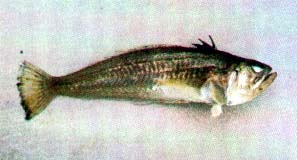
After
being sting by large Weevers
the pain is described as excruciating for the first two hours after which
it subsides and rarely causes permanent injury. The pain can be relieved
by immersing the foot in hot water at 40° C. This fish is common on
sandy coasts all around Britain.
Beware
of the Weever Fish
3
August 2003
Guided
Butterfly Walk
 Friends
of Lancing Ring arranged for expert Brianne Reeve of the Butterfly
Conservation group to lead a walk over the Lancing
Ring Nature Reserve. Friends
of Lancing Ring arranged for expert Brianne Reeve of the Butterfly
Conservation group to lead a walk over the Lancing
Ring Nature Reserve.
There
was a screech and a magnificent view of a Sparrowhawk
flying overhead, being mobbed by a Crow,
the pale blue-grey body of the raptor distinguished against the cloudless
sky.
Eighteen
species of butterfly were seen on the one and half hour walk around the
meadows. They included immigrant species like the infrequently seen Clouded
Yellow Butterfly, and the Wall
Brown which can be a tricky one to see
for butterfly novices. This is a new daily
record number of different butterflies for
me.
In
the horse's field under the A27 flyover (west side of the Steyning road,
south of the large roundabout) north of Old Shoreham, one hundred Black-headed
Gulls congregated. This may be the advanced
sortie after the annual explosion of flying
ants.
Report
2003
2002
Walk Report
White
Butterflies Identification page
In
an Old Shoreham garden (Frampton's Court) a strange moth with two pairs
of dragonfly-type wings flew rapidly from one plant to another, never settling,
very fascinating as it rapidly dipped its proboscis into each flower before
buzzing off to another nectar source. This was the Hummingbird
Hawk Moth, Macroglossum
stellatarum, an occasional immigrant.
Moth
Report by Mike Burtt
31
July 2003
 There
were 67 Mute Swans
and one Australian Black Swan on
the river at low tide south of the Toll Bridge and visible from the riverbank
by Adur Metal Works. Four of the Mute Swans
could be seen by Adur Recreation Ground under the Railway
Viaduct. This is the largest number of swans I have seen on the River
Adur from one viewpoint. There
were 67 Mute Swans
and one Australian Black Swan on
the river at low tide south of the Toll Bridge and visible from the riverbank
by Adur Metal Works. Four of the Mute Swans
could be seen by Adur Recreation Ground under the Railway
Viaduct. This is the largest number of swans I have seen on the River
Adur from one viewpoint.
First
impressions seemed to indicate an even greater influx of Painted
Lady Butterflies than yesterday as a half
a dozen danced around one Buddleia
bush on the cyclepath south of the Toll Bridge.
 30
July 2003 30
July 2003
On
an overcast, cool, with brief sunny spells, light rain at times, it would
be thought of as unpromising day for butterflies.
However,
the whole of the lower slopes of Mill
Hill were alive with the amorous flutterings of an estimated 2,000
+ Chalkhill Blue Butterflies reaching
densities of three every square metre (two males and one female) on plenty
of occasions. The lower slopes cover nearly five acres of ground so the
estimate is a conservative one. This year, the numbers must approach the
historic records of thousands of Chalkhill
Blues reported in the past.
Altogether
on Mill Hill and its approaches there were seventeen
different species of butterflies, a new record in one day for me. An
unusual second brood Dingy Skipper
was recorded on the lower slopes.
 The
prevalence of immigrant of brightly coloured Painted
Lady Butterflies (40+) on the footpath
through the Lancing Ring meadows with the new
reddish Small Tortoiseshells (25+)
leaves me to speculate that the Small Tortoiseshell
Butterflies were immigrants as well, although
north of The Street, Old Shoreham, a normal
orange livery specimen was noted. Casual visitors
to the approaches of Mill Hill and visitors to Lancing Ring should not
mistake the hundred plus Common Blue Butterflies
for Chalkhill Blues. Common
Blue Butterflies (100+) were found mostly
to the south of the A27. The
prevalence of immigrant of brightly coloured Painted
Lady Butterflies (40+) on the footpath
through the Lancing Ring meadows with the new
reddish Small Tortoiseshells (25+)
leaves me to speculate that the Small Tortoiseshell
Butterflies were immigrants as well, although
north of The Street, Old Shoreham, a normal
orange livery specimen was noted. Casual visitors
to the approaches of Mill Hill and visitors to Lancing Ring should not
mistake the hundred plus Common Blue Butterflies
for Chalkhill Blues. Common
Blue Butterflies (100+) were found mostly
to the south of the A27.
Butterfly
List (Species Recorded)
Blue
Butterflies of Shoreham
Adur
Butterflies
 28
July 2003 28
July 2003
On
the town side of the bridge leading to Mill Hill
that transverses the main A27 road, on the east there is a small Hawthorn
copse (at the top of Chanctonbury drive, north side) leading to the
grasses of the trunk road steep bank. In this small garden sized plot of
long grasses and scrub, two species of blue butterfly congregated sometimes
fighting over the same grass head. On this cool, overcast and windy day,
the commonest Common Blue Butterfly
(20+) seemed very small compared to at least one, probably three or four
of the larger Chalkhill Blue,
together with Meadow Browns
(6+) and Gatekeepers (3+).
I originally thought that Brown Argus Butterflies
were present but the distinctive
brown-blue-brown colour is now probably the
female
Common Blue Butterfly as closer examination
of the photographs seemed to indicate the latter butterfly.
Fourteen
different species of butterfly were seen on Mill Hill.
Identification
Notes about the Brown Argus
Butterfly
List (Full Report)
Adur
Butterflies
27
July 2003
There
were 500+ Meadow Brown Butterflies
seen with thirteen
or fourteen other butterfly species including three
Clouded
Yellows and a handful of Chalkhill
Blues seen on the southern meadows of
Lancing Clump. A Wall Brown Butterfly
showed an unusual faded colour. Long-winged Conehead Crickets were
seen.
Full
Report
Full
Report with supplement
Friends
of Lancing Ring
24
July 2003
The
bright yellow with an unmistakable lining of black was immediately recognised
as the first immigrant Clouded Yellow Butterfly
of the year in the lower meadows of Lancing Clump.
It was flying around energetically. The day was noted for large numbers
of Red Admiral Butterflies (50+) and
many of these may have been immigrants as well.
Butterflies
of the Day
 23
July 2003 23
July 2003
A
Brown
Argus Butterfly was a surprise discovery
on on the Slonk Hill A27 southern embankment (TQ
228 067) with other butterflies including
Meadow
Browns,
Red
Admirals, Gatekeepers,
Large
Whites, one Speckled Wood,
a
few Chalkhill Blues,
and
Large
Skippers. This is the first record of
a Brown Argus
on these Nature Notes pages. The day's tally of different species reached
fifteen.
More
Butterflies
21
July 2003
Fifteen
different species of butterflies in a single
day is a new record for me and included 200+
Chalkhill
Blues on the lower
slopes of Mill Hill.
Butterfly
List
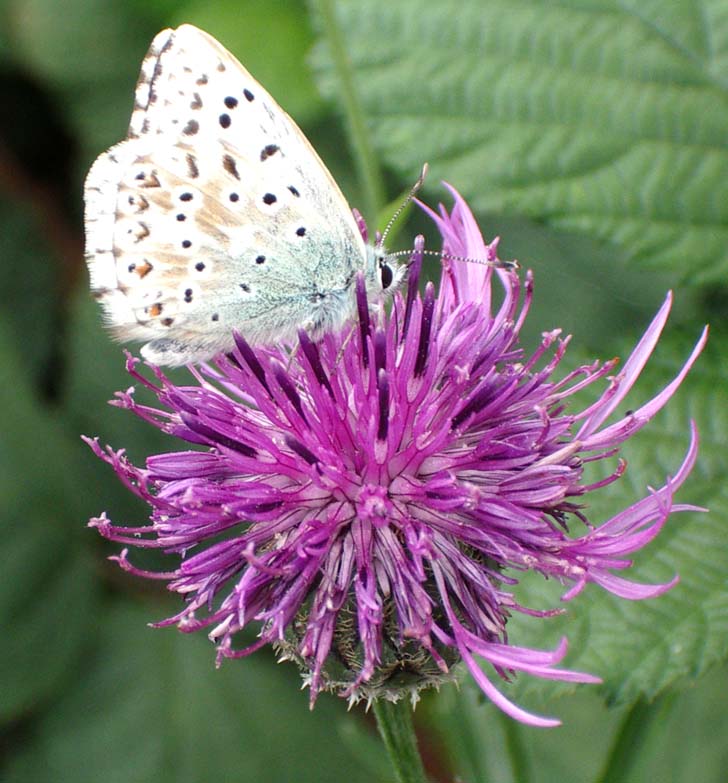 20
July 2003 20
July 2003
Midday
Over
300
Chalkhill
Blue Butterflies
were observed fluttering around and copulating on the lower
slopes of Mill Hill and they were to be
seen on the sunny day at a conservative average of one butterfly
every two square metres. At this prevalence, I got the impression that
I was constantly about to step on one. My estimatefor
the number of Chalkhill Blues
on Mill Hill was 1,200.
Butterfly
List (Full Report)
Early
Evening Supplementary Report
Adur
Butterflies
19
July 2003
Chalkhill
Blue Butterflies on the Waterworks Road,
Old Shoreham numbered at least five and they could be seen immediately,
on the margins amongst the ferns, just north of where the road passed under
the A27 Flyover. A male Emperor Dragonfly
was on patrol.
At
least one, almost certainly more, Wall
Brown Butterflies were seen amongst vegetation
including Fleabane
on the cyclepath on the east side of Adur from Old Shoreham northwards.
Butterfly
List
18
July 2003
There
are loads (probably over a thousand) of Moon
Jellyfish,
Aurelia
aurita, in Shoreham harbour, with
the four pink rings (the gonads)
visible in many specimens.
15
July 2003
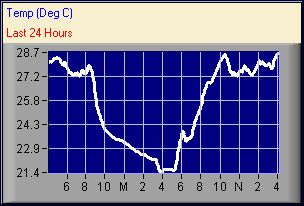 St. Swithun's
Day St. Swithun's
Day
A
record temperature for the new millennium on Shoreham beach.
28.6
ºC was reached by 10.28 am. Just after 4:00 pm 28.7 ºC was attained
and this exceeds any other shade air temperature since the records began
at the start of 2000.
 14
July 2003 14
July 2003
With
a shade temperature recorded at 28.4° C it is the warmest day of the
year and the second warmest of this millennium.
Butterfly
Report
11
July 2003
 On
the lower slopes of Mill
Hill, at least fifty Chalkhill Blue
Butterflies were flying about and not
settling for long. Only a handful were on the middle
and upper slopes. The Stemless Thistle
was in flower, that prickly rosette that is a characteristic and slightly
uncomfortable feature of the chalk sward. In the middle of the day the
miniature Eyebrights
show best and are ideally seen through a magnifying glass. Pyramid
Orchids were frequently seen in the central
area known as the Triangle. On
the lower slopes of Mill
Hill, at least fifty Chalkhill Blue
Butterflies were flying about and not
settling for long. Only a handful were on the middle
and upper slopes. The Stemless Thistle
was in flower, that prickly rosette that is a characteristic and slightly
uncomfortable feature of the chalk sward. In the middle of the day the
miniature Eyebrights
show best and are ideally seen through a magnifying glass. Pyramid
Orchids were frequently seen in the central
area known as the Triangle.
Full
Report
On
a sunny day the temperature peaked at 26.6° C.
5 July
2003
A
report from Paul
Parsons and other divers seems to indicate
the sea bed off the Church
of the Good Shepherd, Shoreham Beach, has been changed, probably damaged
by the mysterious work of the Environmental Agency.
Undersea
Wildlife Report
Dredging
and Pumping Work
1 July
2003
The
Environmental
Agency opened up the four inch slats and three workers (in two vehicles)
supervised the the input of seawater into Widewater
Lagoon on the high spring tide. Despite this topping up the lagoon,
the water level was still fractionally down compared to
11
June 2003.

The
specific gravity was measured (and double-checked) and the salinity calculated
at 35‰ (ppt), which is full strength seawater. This compares to a salinity
of 24‰ (ppt) in July 2002. A combination of the input of full strength
seawater and the evaporation during the exceptionally hot spell this spring
is likely to be the reason. If the fresh seawater is introduced throughout
the summer at the current rate, the lagoon could become too hypersaline
and be unable to support aquatic life.
Widewater
Salinity Records 2002-3

28
June 2003
Three
Peregrine Falcons were perching near the
Shoreham Harbour Power Station on some of the high dock lamps. These three
birds are thought to be the three chicks born this year and they put up
an amusing display chasing each around the power station chimney (their
birth place in the nest box on the south side) and dislodging each other
off the available perches.
Breeding
Report 2002
In
Widewater
Lagoon, several large Common Eels
have been seen to the east of the bridge. They could only be seen at the
bottom of the lagoon from a very high vantage point on the roof of one
of the houses.
Reports
by Peter Talbot-Elsden (Southwick)
 27
June 2003 27
June 2003
Slonk
Hill has been cut in half by the A27 by-pass as the dual carriageway
truck road (constructed 1971) and the southern area of the hill is now
the steep chalky embankments of the dual carriageway.
The
southern bank was adorned like a meadow with an extensive display of Spotted
Orchids, Dactylorhiza
fuchsii, near
the footbridge to Slonk Hill Farm. The
bank attracted butterflies including my first Comma
Butterfly of the year, a Large
White Butterfly with extensive black markings
and a handful of aggressive Meadow Browns
which
tended to chase other butterflies away at any opportunity.
There
is a footpath through a Beech and Sycamore copse from the footbridge westwards
and this can be followed for 200 metres. At the western end the embankment
is overgrown with longer grasses and brambles and an occasional Pyramid
Orchid, Anacamptis
pyramidalis.

It
was in this area I discovered my first Ringlet
Butterfly on these Nature Notes pages.
This butterfly persisted in basking with
wings wide open and would not close them for a view of the ringlets.
More
Images
 26
June 2003 26
June 2003
In
the Lancing Ring meadows, the Marbled White
Butterflies were emerging, where 30
Small
Skipper Butterflies readily settled on
the Greater Knapweed.
Full
Report and Pictures from the Lancing Meadows
On
New Monks Farm, Lancing (west of Shoreham Airport) an out of flight season
Peacock
Butterfly in good condition settled south
of the Withy Patch.
 19
June 2003 19
June 2003
Young
Blackbirds on the cyclepath at Old Shoreham
south of the Toll Bridge look more thrush-like than their parents. Azure
Damselflies were common (50+) in the field
to the east of the Waterworks at Old Shoreham.
A
yellow (underwing) Large White Butterfly
was noticed and a single Meadow
Brown. On the brief visit over 50
Small
Tortoiseshell Butterflies were seen as
well as Dark Bush Crickets
(a
common species).
Full
Report
 14
June 2003 14
June 2003
45
Mute
Swans were counted on the still tidal
part of the River Adur at Upper Beeding by the disused
Cement Works. At Beeding
Hill, the Fragrant Orchid, Gymnadenia
conopsea, was in flower, and on the
road verges above Anchor Bottom, there were the
first observations of Meadow Brown Butterflies
of
2003. And on Mill Hill, the Small
Skippers put in their first appearance.
On
the
lower slopes a bird
of prey has caused a bit of a puzzle over its identification. This
bird is very likely to be the rare Hobby, Falco
subbuteo. The absence of the vast
yellow expanses of Horseshoe Vetch was
my instant impression. The grasses were still the short springy turf and
quickly a Adonis Blue Butterfly
fluttered by. It was one of three.
Adur
Butterflies
4 June
2003
I
walked from the Mill Hill upper car park along
the lane and down to the stables at Old Erringham, a Little
Owl was in its normal place in the small
copse overlooking the stables but this time sat on a fence post right next
to the road, otherwise just a single Hobby
seen. A few Swifts, Swallows &
House
Martins were around the farm buildings
and a Chiffchaff
also in the copse, plus four Yellowhammers
on Mill Hill.
3
June 2003
The
famous Boar Fish,
Capros
aper, died after its aquarium sprung
a leak in the middle of the night. (It was caught in November
2002). Estimates are being obtained for
a mould to make a casting of the fish by a professional taxidermist.

Vital
Statistics
Fishbase
Morphology
The
best spectacle from Mill Hill was left to last
as a bird with a very bright yellow breast flew out of the bushes by the
reservoir. It looked like an exotic bird and it must be a male
Yellowhammer,
that can look as yellow as a canary during the summer.
Yellowhammer
(Birdguides)
Full
Report
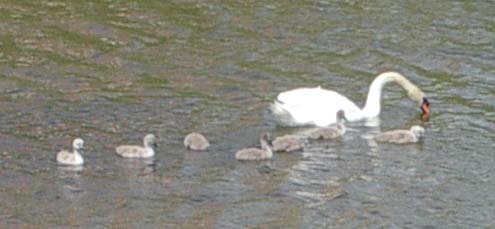 The
Mute
Swans on Widewater Lagoon have seven cygnets
this year. The
Mute
Swans on Widewater Lagoon have seven cygnets
this year.
Red
Admiral Butterflies and faded Painted
Lady Butterflies appeared
with a breeze from the south. I only saw a couple of each in ten minutes,
but they behaved like immigrants and later more of both species were seen
near Old Shoreham Toll Bridge.
 31
May 2003 31
May 2003
Shoreham
bathed in a heatwave up to
24°
C for the opening of the Adur Festival and
Adur
World Oceans Day 2003 on Coronation
Green, Shoreham-by-Sea. About
3000 people attended the event that was steady and busy throughout.
Adur
World
Oceans Day 2003
10:00
am - 4:00 pm
Popular
Information File on Adur World Oceans Day
2003
Acrobat
Information File on Adur World Oceans Day
2003
Adur
World Oceans Day 2003 Images (by Ray Hamblett)

The
Adonis
Blue Butterflies have disappeared from the
lower
slopes of Mill Hill and the vast expanse
of Horseshoe Vetch has
now receded.
27
May 2003
The
Environment
Agency are trying to implement measures
to protect what they believe to be the only remaining Water
Vole population in Sussex on New Monks
Farm, Lancing. The habitat is under threat both from the airport expansion
plans and legal spoil dumping on the 120 acres of unused farmland between
Shoreham Airport and Lancing.
26
May 2003
After
some rainy and dull days, the sun came out again on the Bank Holiday Monday
afternoon. On the on the lower slopes of Mill
Hill both male
and female Adonis
Blue Butterflies
flew
from one Horseshoe Vetch
flower to another, and occasionally settled on some bare earth patches.
Full
Report
25
May 2003
A
visit to Woods Mill (Sussex
Wildlife Trust), near Small Dole, produced the Great
Red Damselfly, Pyrrhosoma
nymphula, and a mating pair
of Azure
Damselflies, Coenagrion
puella.
Link
to Images
Adur
Damselflies & Dragonflies
23
May 2003
Sheila
Wright and David (Sussex Bat Group) led the
evening walk in the dark up Lancing Ring in
overcast damp conditions, unfavourable for bats as their prey food of insects
were not flying about. On the edge of the woodland the bat detector picked
up the sound of two Pipistrelle Bats
in flight. The bats emit noises from their echo location system, which
cannot be heard by the human ear, but can be picked up and identified by
the bat detector.
These bats were seen flying across the path shortly afterwards. Later a Noctule
Bat was also detected.
Bat
Conservation Trust: Bat Information
Full
Report
21
May 2003
A Glaucous
Gull (1st or 2nd summer), Larus hyperboreas,
is
seen again at Widewater, Lancing at 10.15
am and again at 11.30
am, when it flew towards the River
Adur. The Glaucous Gull is
an Arctic species and a rare visitor to southern England. It is a large
species only exceeded in size by the
Great
Black-backed Gull, one of which has been
resident at Widewater since the beginning of 2003.
Image
(Link to)
Sussex
Birder Web Site
17
May 2003
The
Living Churchyard
Wildlife
Walk
St.
Mary de Haura Church, Shoreham-by-Sea
10:30
am
Wildlife
in the churchyard with Brianne Reeve (Birds) and Betty Bishop and Beryl
Clough (Flora) Steve Davey (Lichens) and Peter Hodge (Insects).
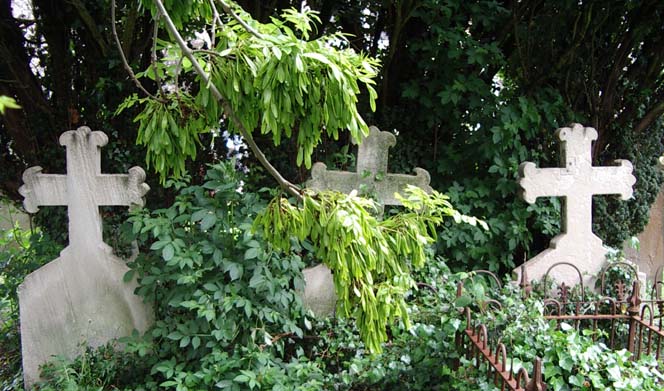
The
Ash trees were laden with keys
On
an overcast day the rain held off for a wildlife survey of the churchyard,
with its collection of park trees and common ground flora of grasses, medicks,
dandelions,
buttercups etc. Several species of ladybird
beetle were discovered
Shoreham
Herald Report
11
May 2003
Brianne
Reeve (Shoreham & District Ornithological Society) led the walk on
Lancing
Ring and meadows on behalf of the Friends
of Lancing Ring. We were greeted by a
screaming pair of Swifts,
but otherwise it was more of an audio show, the birds calling from the
bushes. An exception was a Yellowhammer
on the top of a Gorse
bush.
Full
Report
9 May
2003
A
pair of Stonechats
showed
and sang well, north of Mossy Bottom (near Southwick
Hill).
Full
Report
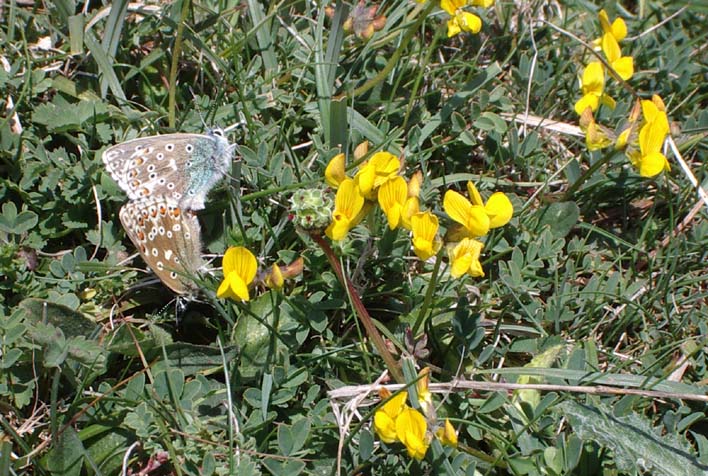
A Small
Copper Butterfly was my first from Mill
Hill as the Adonis Blue Butterflies
copulated.
Full
Report
7 May
2003
A
Willow
Tit made its distinctive
call from a tree on the cycle path from Old Shoreham Footbridge south
to Ropetackle (TQ 210 054). The
plain coloured bird could be seen, but not clearly because of the sun.
Earlier
Report
Because
of the rarity (probably extinct) of this bird in Sussex, this is not a
100% ID. It has not been submitted to the Sussex
Ornithological Society as an official
sighting as it has not been verified by a photograph.
6
May 2003
Afternoon
As
the River Adur turns on the approach from the sea north of the A27
Flyover, the unmistakable downturned long beaks identified either a
couple of Whimbrels
or
a pair of Curlews
that
seemed to be resting or feeding in the lee of the west bank at mid-tide.
This was the first time I had seen these waders on the river estuary
and they came as a bit of a surprise. Alas I did not have experience to
differentiate the two species. It seemed that the shorter more downturned
beak was nearer the Whimbrel,
but I failed to observe the differences in the head markings between the
two species of wading birds with downturned beaks.
Full
Report Link
Morning
On
the lower Vetch Trail slopes of Mill Hill at least
30 Adonis
Blue Butterflies fluttered around. There
was one Orange Tip Butterfly as
well as the first
Wall Browns
of the year.
Full
Report Link
5 May
2003
I
followed the Vetch Trail
on the lower slopes of Mill Hill towards Old
Erringham on a sunny 17° C
May Bank Holiday Monday. Several acres of the steep slopes were graced
by the yellow flowers of the Horseshoe
Vetch (the food plant of the Chalkhill
Blue and other butterflies).

A
narrow path winds it way through the lower
Horseshoe
Vetch covered lower slopes of Mill
Hill
The
sun had brought out the butterflies and day-flying
moths there was an exceptional variety:
 Dingy
Skipper 25+ Dingy
Skipper 25+
Grizzled
Skipper 5 +
Small
Heath 10 +
Painted
Lady one
Cinnabar
Moth one
Adonis
Blue one
The
Small
Heath and
Adonis
Blue are my first confirmed identifications
from Mill Hill for these butterflies.
Link
for Butterfly Images
Dingy
Skipper
The
trail climbs up a steep stepped incline through dense scrub and the following
species were added:
Speckled
Wood 5 +
Red
Admiral one, possibly three
In
Shoreham
town and gardens, a few specimens of the following butterflies were
noted:
Small
White 5+
Holly
Blue 3+
4 May
2003
A
Large
Red Damselfly,
Pyrrhosoma
nymphula,
visited
my
south Lancing garden pond.
(TQ 186 044).

29
April 2003
A Green
Hairstreak Butterfly was a notable observation near Pepperscombe (near
where the South Downs Way passes west of Steyning). (TQ
160 110)
A
Brimstone
Butterfly fluttering along the railway
embankment near the Eastern Avenue railway crossing in Shoreham came as
a bit of a surprise as I had not seen one for over a decade in this area.
However, this was nothing compared to the shock of seeing a Yellow
Wagtail almost out of my front window
on the roof of my house, in Corbyn Crescent (TQ
224 053), opposite. At least, I thought it
was an immigrant bird, not a Grey Wagtail,
which
has been recorded before in Shoreham town. The bird flew suddenly from
the roof to the ground and then disappeared and I could not rediscover
it with my binoculars.
25
April 2003
Now
I have at last seen a falcon fly off the Shoreham Harbour Power Station,
not from the chimney but from the main part of the tall building. I would
not have penned it as a
Peregrine
and I did not have my binoculars.
With my relatively inexperienced eye, I would have put it down as a Sparrowhawk
and it appeared much smaller than I expected. The swoop and glide was distinctive
and this was identical to the bird of prey I saw nine days ago near Mossy
Bottom.
20
April 2003
A Dingy
Skipper Butterfly was seen by the side
of the Industrial Estate at Golding Barn near Upper Beeding (near Steyning)
in the Adur valley on a breezy overcast Easter Sunday morning. This species
is not often recorded, although it it is known from Mill
Hill.
Adur
Butterflies
ANightingale
was heard over Cokeham
Reed Beds, west Lancing. (TQ 167 043).
16
April 2003
The
shirt sleeves sunny weather was unseasonal (warmest April day since 1988),
recorded at 22° C in
the shade and this brought the butterflies out including
five
Brimstone Butterflies
on and around
Mill
Hill.
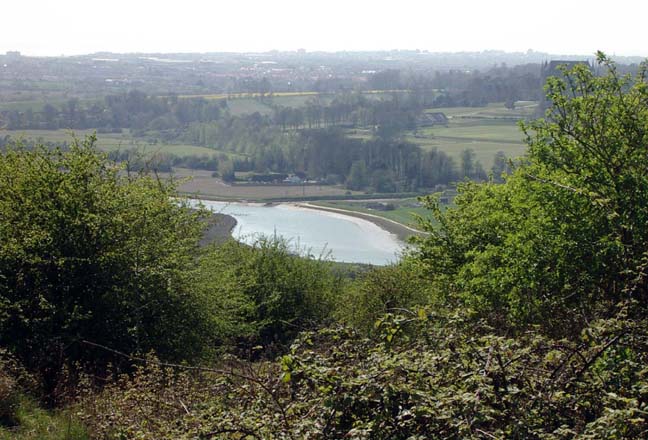
View
over Lancing from Mill Hill
on
16 April 2003
From
the bare field to the south-west of Southwick Hill
the melody of a Skylark
filled
the air for ten minutes or more without a break.
The
small falcons are not always to separate at a distance, but the blunt-shaped
head and swooping flight, together with the subdued colours (compared to
a Kestrel) indicated
a male Sparrowhawk
at New Erringham Farm in the dip of the downs north of Shoreham.
(I now think that this bird could have been a
Peregrine Falcon.)
 The
shirt sleeves sunny weather was unseasonal, recorded at 21°
C in the shade and this brought the butterflies
out with 50+ Small Tortoiseshell Butterflies
from
the bridlepath by Slonk Hill Farm northwards
past New Erringham to Mill Hill, with 15+
Peacock
Butterflies and to my surprise
5
Brimstone
Butterflies
on and around
Mill
Hill. The
shirt sleeves sunny weather was unseasonal, recorded at 21°
C in the shade and this brought the butterflies
out with 50+ Small Tortoiseshell Butterflies
from
the bridlepath by Slonk Hill Farm northwards
past New Erringham to Mill Hill, with 15+
Peacock
Butterflies and to my surprise
5
Brimstone
Butterflies
on and around
Mill
Hill.
Adur
Butterflies
Weather
at Shoreham Beach (check by dates)
5 April
2003
At
midday a mysterious
large bird of prey was seen flying east
towards Lancing College. The bird was flying towards us at a height of
about 100 metres. The immediate impression was of a powerful, bulky bird
of prey, in size close to a female Peregrine.
The bird had a relatively slow wing beat and was mainly gliding. The
bird was not wearing
jesses.
Full
Report

19
March 2003
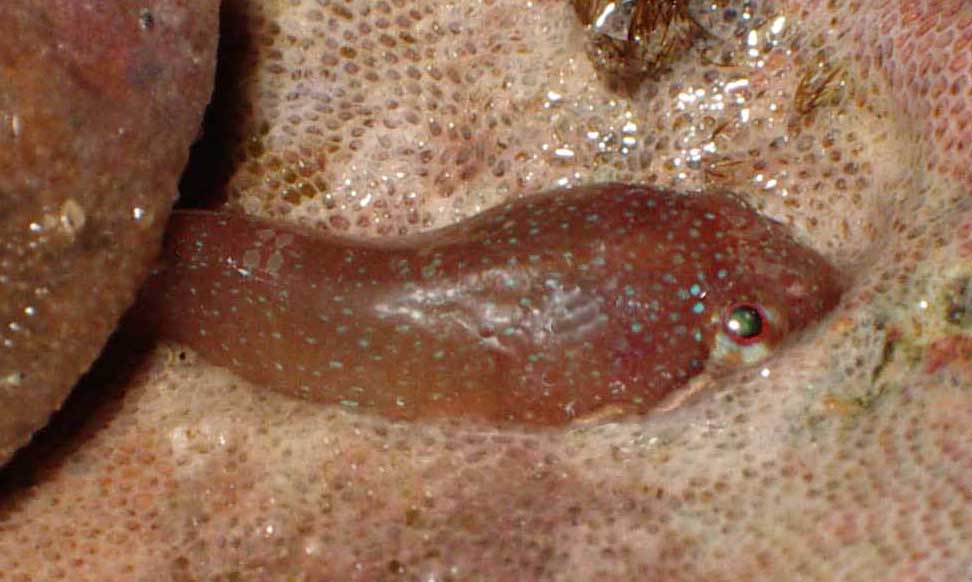
The Small-headed Clingfish is about 10 mm long
The low
equinoctial
spring
tide
receded as far as I have known it uncovering all the rocks on Lancing
Beach. It was too dark to explore the exposed shore properly, but juvenile
Small-headed
Clingfishes were present under rocks,
with
hundreds of crabs
and a chiton (small
mollusc) Acanthochitona crinita.
The sea anemone Sagartia troglodytes
was plentiful.
Shorewatch
Project
17
March 2003
For
the first time ever I discovered six 15 cm long SandSmelt,
Atherina presbyter, in my shrimp push-net
off Southwick beach, together with three pints of Brown
Shrimps and some orange crabs (species
not identified), plus a couple of small Weevers.
Report
by Peter Talbot-Elsden
12
February 2003
After
the mist cleared there were a pair of Peregrine
Falcons circling over the Shoreham Harbour
Power Station chimney, one falcon going into the large nest box on the
southern side and the other bird right on top of the chimney.
Report
by Peter Talbot-Elsden
Breeding
Report 2002

There
was a ripple of activity on the pond in my back garden, in south Lancing
(TQ
186 044) as I checked on it this morning.
A pair of mating
Frogs
are resting on the surface among the weed near the edge of pond. They are
tending a freshly produced clump of spawn.
The
pond and spawn froze over night.
January
2003
There
is a plan to introduce cows grazing on Mill Hill
during the winter months. This appears to be without consultation with
the public. The reason purported is to control the spread of the scrub.
There is no mention of erosion of the chalk sward,
the process known as "soil creep"
where the soil moves down the steep slope, extenuated by overgrazing and
can form terraces, bare patches which are more likely to be colonised by
annual plants, whereas the chalkhill turf contains 90% perennials.
Cows
also destroy the Horseshoe Vetch,
Hippocrepis
comosa, which is the sole food plant
for the caterpillars of the Chalkhill Blue
Butterfly.
30
January 2003
In
the town there was a flurry of snow. On the downs
there was a light covering which disappeared by the following day.

The
Dewpond at Lancing Clump
Photograph
by Ray
Hamblett (Lancing Nature)
26
January 2003
A
lovely male Red Breasted Merganser
was on the small island at the eastern end of the Widewater
Lagoon from 2.45 pm until 3.15 pm
when I left.
A Bar-tailed
Godwit was spotted just south of the Old
Shoreham Toll Bridge, the first time I have seen this wader here. This
confirmed my earlier report. Also
a very lonely-looking Brent Goose
was around!
23
January 2003
A
Bar-tailed
Godwit waded in the shallows south of
the Toll Bridge.
Full
Report
19
January 2003
In
the tiny front garden of 123 Old Shoreham Road, Shoreham, a large healthy
looking Red Fox almost filled the garden
with its presence at 3:00 pm
on a bright cloudless afternoon. It was not afraid of me, less perturbed
than many domestic cats.
4 January
2003
Widewater
Lagoon is in flood after the recent rain and the salinity fell to 15‰.
The Little Egret
foraged in the shallows as usual. This bird is not ringed.
Widewater
Salinity Page
The
morning layer of snow
is so thin it could be mistaken for frost. The
precipitation on Shoreham beach up to 9:00
am was a mere 1.022 mm, with the temperature
at its lowest point at 1.7 ºC at 7:50
am and a dew
point falling to -0.9 ºC at 6:16
am. Wind chill was -5.3 ºC was 7:48
am and although it is getting warmer,
the wind chill in the Light Breeze (Force 2) was still below freezing in
mid-morning.
3 January
2003
Amongst
the scant remaining vegetation at a high spring tide, at least three pipits
perched and flew around just above the water surface south-west of the
Footbridge
over the Adur (TQ 216 047).
These were not the plump Meadow Pipits
of the local fields but a different bird altogether, thin and straggly
with a much paler speckled breasts with plenty of white, and a more marked
face with a bit of a dark top. The white, or was it grey, tail feathers
were not so bright either. So this bird was either a Rock
Pipit (Scandinavian Race) or a Water
Pipit, Anthus
spinoletta. They were not easily perturbed,
but they all flew off over the estuary before I could get my camera out.
It seems from research and consultation that the identity is most likely
to be a Water Pipit,
which is not what I thought of at first. (The full subspecies name of the
Rock
Pipit [Scandinavian
Race] is Anthus petrosus littoralis.)
These
pipits can be very tricky to identify.
Last
Meadow Pipit Report
Pipit
on Lancing Beach
Trouble
with Pipits Identification
Adur
Estuary Page
Anthus
petrosus littoralis (Sussex records)
Rock
Pipits Observation Page (BMLSS)
Rock
Pipits (Birdguides)
My
first butterfly of the year was almost certainly
a Small Tortoiseshell that
fluttered out of the Hawthorn
and Dogwood shrub
on the south east corner of the dewpond field on Lancing
Clump.
A
single Great Tit
was spotted before it darted into an Ivy laden Hawthorn.
Full
Report
Friends
of Lancing Ring
 2
January 2003 2
January 2003
On
a day noted for its dampness with mud and sodden ground, there was a remarkable
scarcity of birds and other wildlife in all the normal haunts. From a small
bush outside the entrance to Ricardo's (TQ
125 059) on the airport side of the Toll
Bridge at Old Shoreham, a Song Thrush
performed its repertoire of songs, filling the dusk air with melody. The
songs were heard again in various parts of Shoreham
town. Almost everywhere there were large gardens, or parks on any bushes
to sing from the Song Thrush
seemed to be singing. The wet winters of late seemed to have benefited
this bird that feeds mainly on worms, although in hard winters it is capable
of tackling snails when the frozen ground makes worms difficult to come
by.
1 January
2003
The
Long
tailed Tits,
Aegithalos caudatus,
are feeding on peanuts provided in my Shermanbury garden.
Upper
Adur East (Shermanbury area) Nature Pages

|


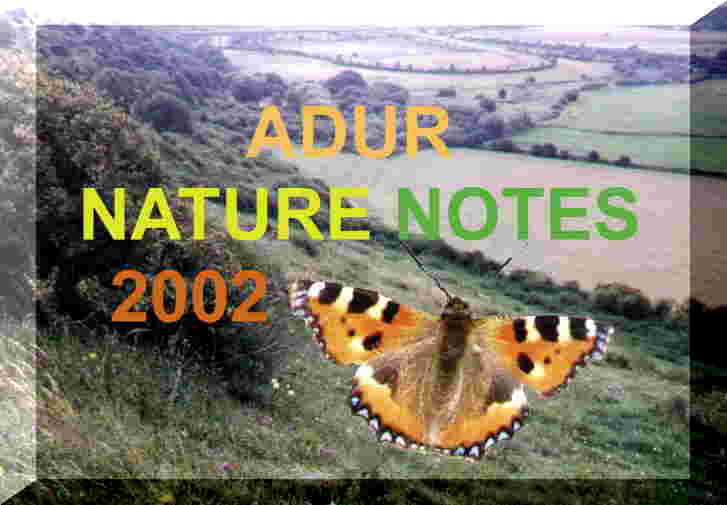
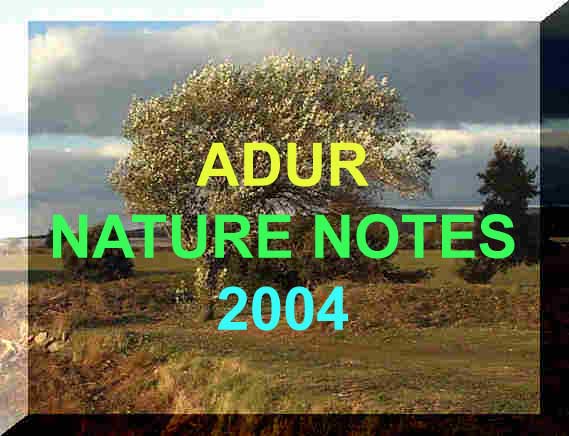


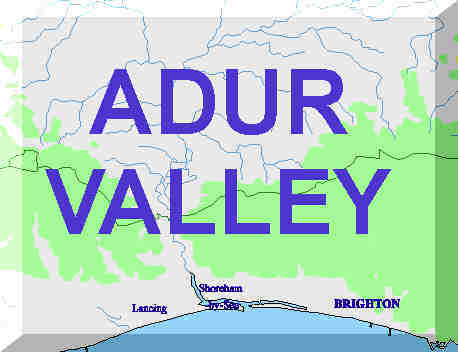

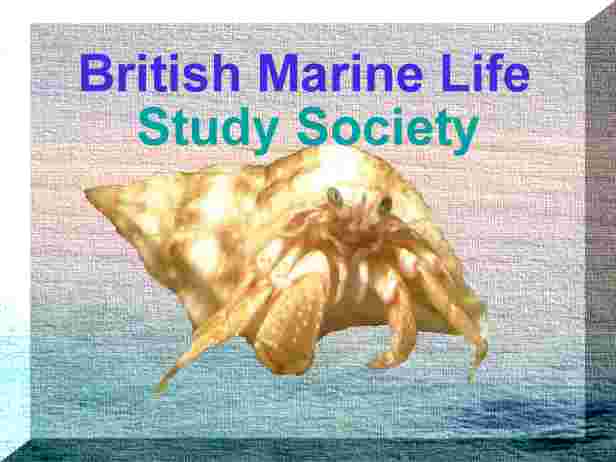





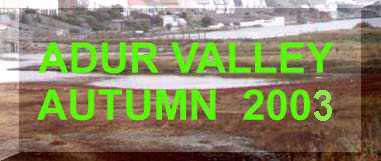




















 20
July 2003
20
July 2003
 St.
St. 







 31
May 2003
31
May 2003











